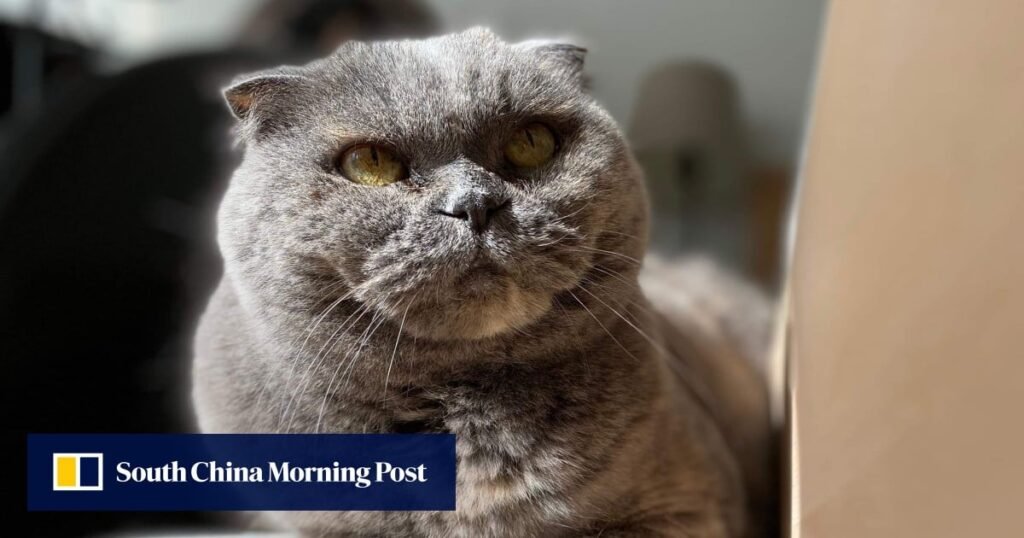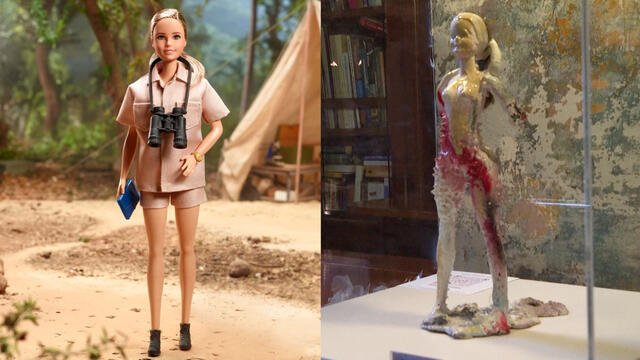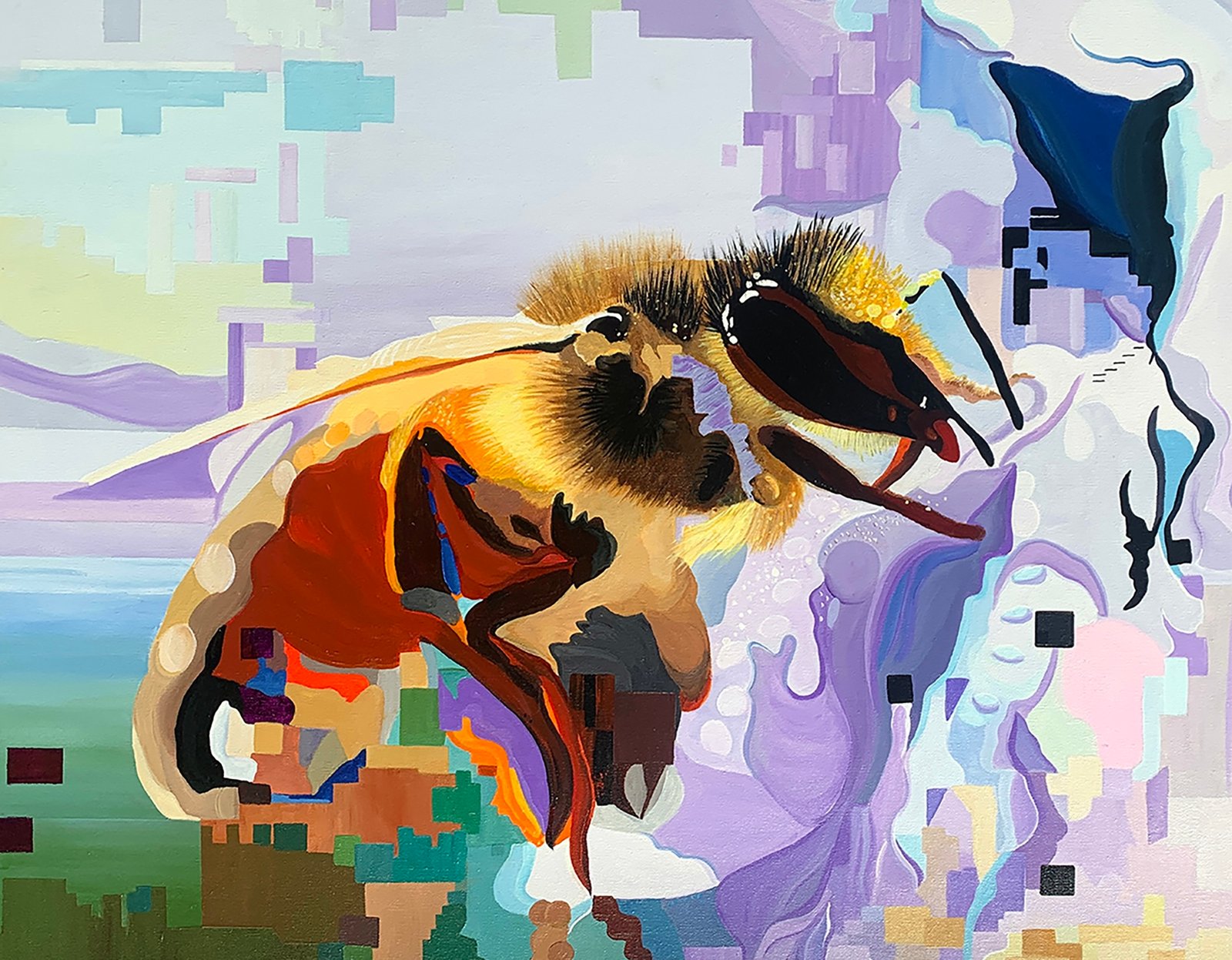Part of the immersive exhibition is a piece titled Globes, comprising fur balls arranged like a solar system. But to complete the piece he needs more fur, whether from cats, dogs, rabbits, guinea pigs – you get the idea.
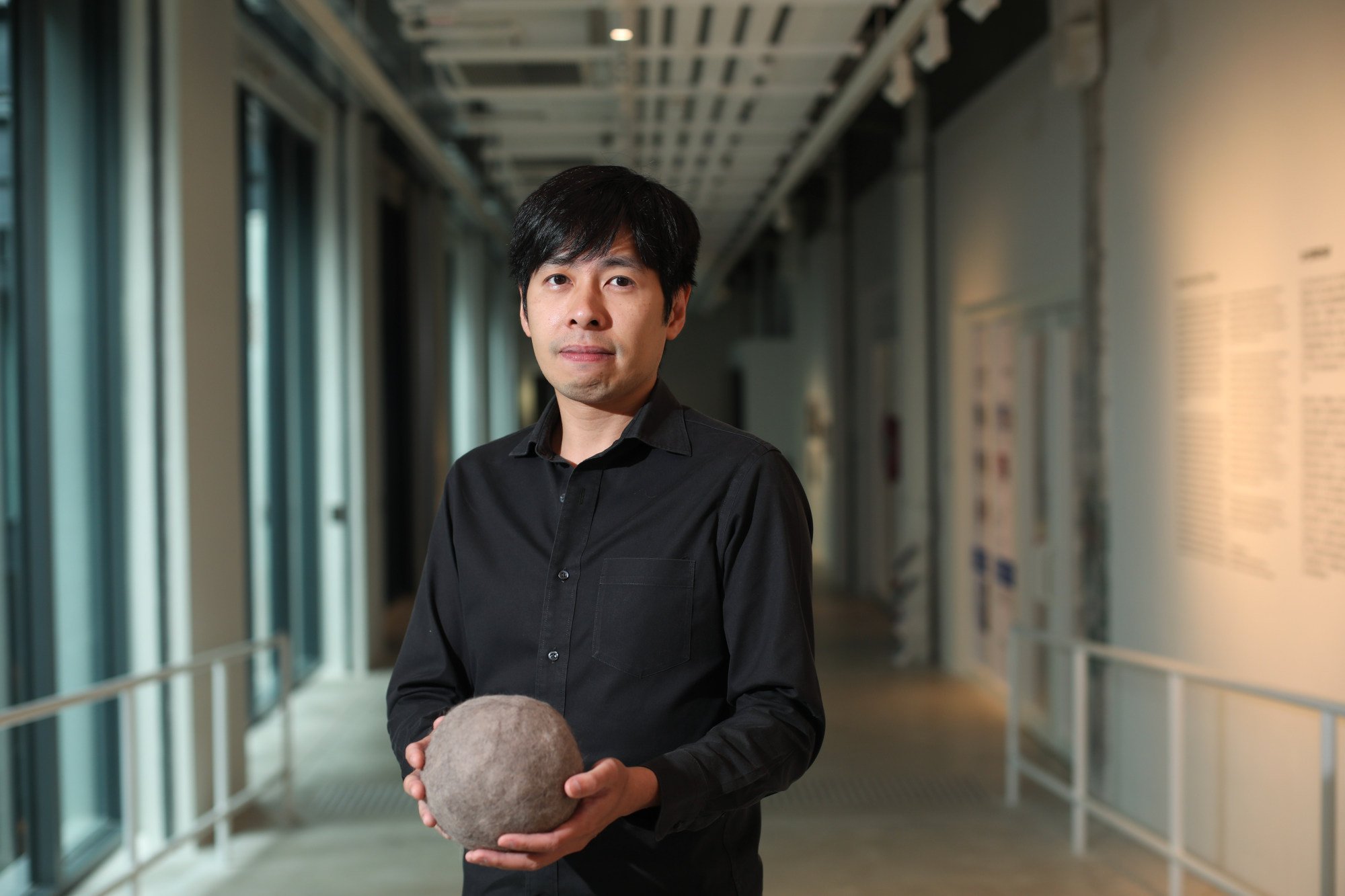
“Basically, I need fur to make more of these,” says Ng, holding up a large, perfectly formed fur ball. To give it some size context, it is about halfway between the size of a basketball and a baseball.
Ng meticulously hand-shaped the ball over the years using the soft grey fur from his own cat, Whisky, a Scottish Fold, the distinctive breed of domestic cat named for its unique folded ears.
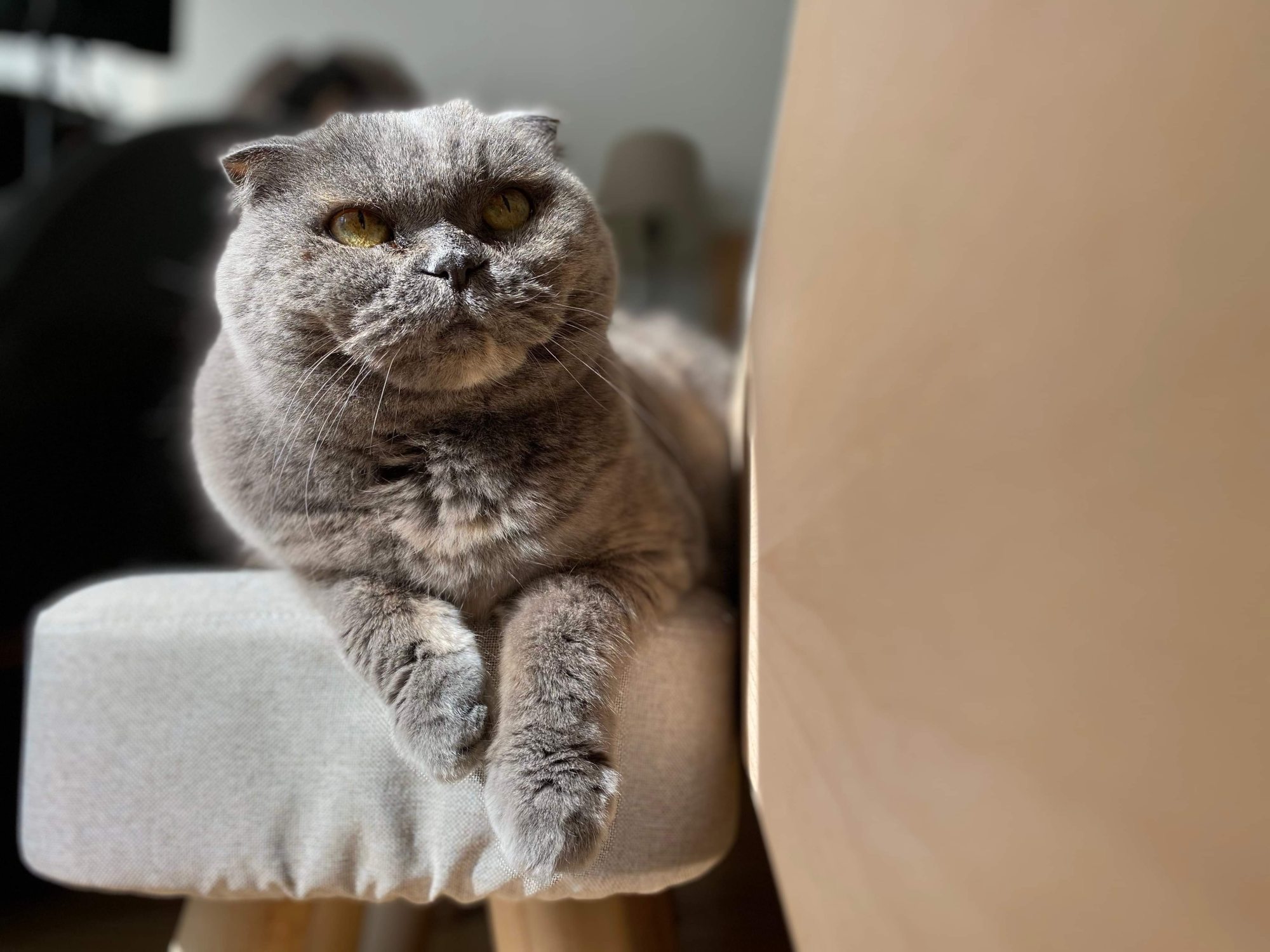
“Collecting the fur started with my wife. Now fur brushing is my daily ritual.”
Chat associate curator Eugenia Law Pik-yu says the act of brushing a cat is a personal, almost sacred act.
“We welcome different colours and textures of fur from animal companions and even welcome a blend of fur from multiple animal companions,” she says.
The Mills’ pet-friendly philosophy also echoes the exhibition’s message, she adds. It also aligns with Chat’s aim to create community-engaging artwork that is more accessible to the public.
‘Reconnected to my previous self’: tram artwork changes art director’s life
‘Reconnected to my previous self’: tram artwork changes art director’s life
To be part of the project, people first need to fill out a Google Doc on Chat’s social media platforms and write a few words about their relationship with their beloved animal(s).
Participants will be selected based on the content of their application forms. The deadline for submissions is April 30.
Those selected can either collect fur at home or join Chat’s Animal Companion Grooming Workshop on June 8, where professional groomers will demonstrate how to care for, comb, detangle and gather fur for the artwork.

Chat’s Animal Companion Fur Needle Felting Workshop, also scheduled for June, will teach selected participants how to create a ball with the processed fur that will then be used in the art installation.
If participants don’t join Chat’s on-site grooming workshop, then Chat reps will contact them directly to collect the fur. The fur will also be cleaned and processed by Chat personnel, Law says. The animal owners’ stories will also form part of Ng’s installation.
“These little fur planets will tell the touching stories between humans and their beloved animal companions,” Law says.
“Spinning can mean the Earth spinning, but is also a step of the textile process,” says Ng, who is also associate professor at Baptist University’s Academy of Visual Arts.
Why we still love globes, and the ‘political minefield’ of making them
Why we still love globes, and the ‘political minefield’ of making them
In another nod to Chat’s rich textile past, Ng will show one of his previous works, a 270-year-old loom acquired from Paris’ Musée Jacquemart-André that has been transformed into a musical instrument.
Another theme, he adds, is exploring time and existence in reference to an animal’s short lifespan. Indoor cats generally live for 12 to 18 years, while the average lifespan for dogs is between 10 and 13 years, depending on the size and breed.
“It’s bittersweet,” Ng says.
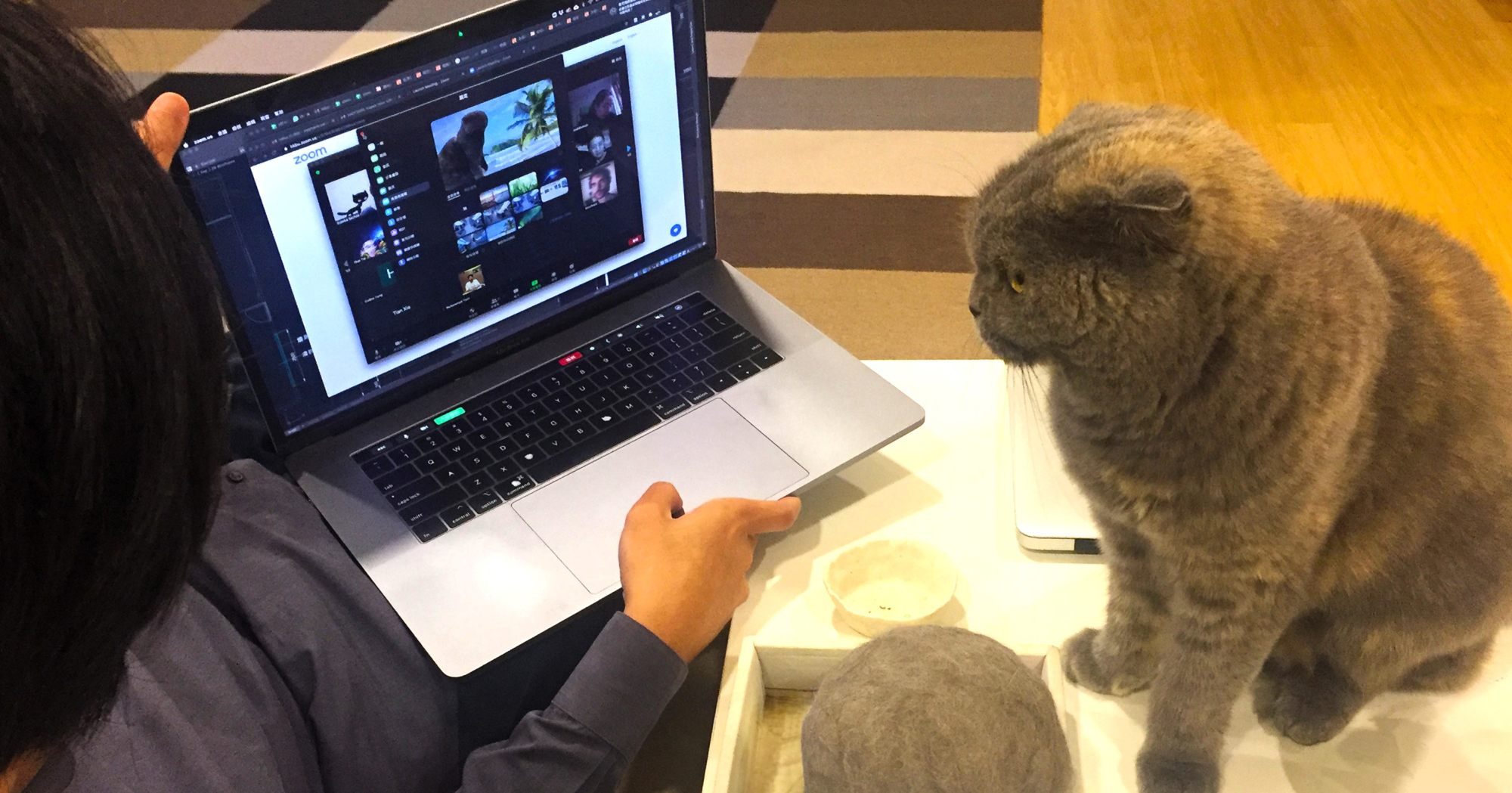
Ng has also tapped into the soothing sound of a cat’s purr and connected it with the Schumann resonances, a set of spectrum peaks in the extremely low frequency portion of the Earth’s electromagnetic field spectrum.
“It’s called the Earth’s natural resonance – it’s kind of the natural sound of the earth.”
When this frequency is at 33.8hz, it is said to provide an increase in memory recall, advanced learning and positive thinking and is linked to powerful meditations and access to higher levels of consciousness. What is mind-boggling, Ng says, is that a cat’s purr also hovers around the same frequency.
To reflect this, Ng will create a dark chamber with a National Geographic-like image of a fur ball planet, where the audience can listen to the vibrating sound of a cat’s purr that has been set at that specific frequency.
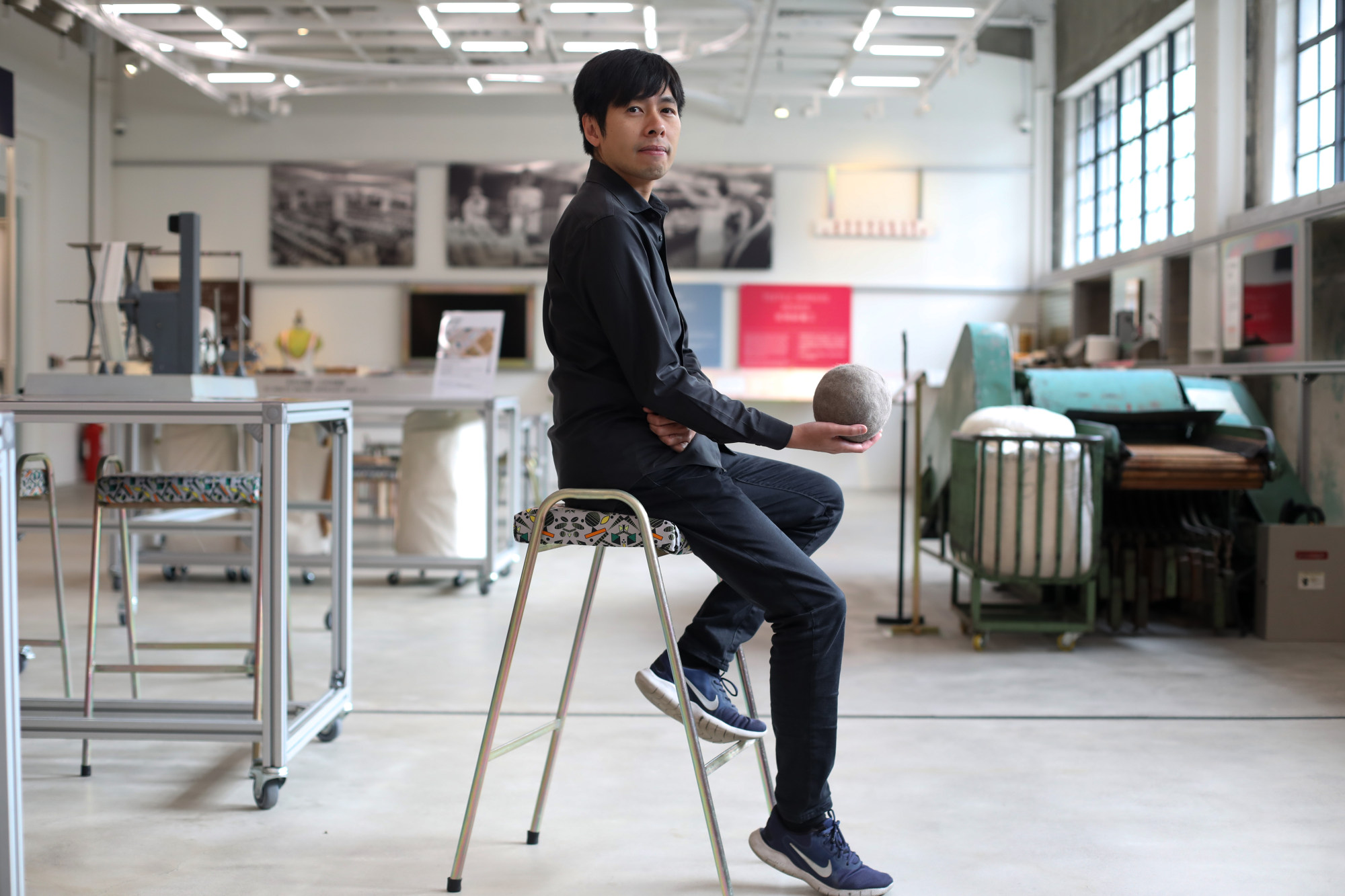
It is not the first time that Ng – whose works have featured at the Museum of Contemporary Art of Rome, the Land Art Biennial in Mongolia, the Echigo-Tsumari Art Triennial in Japan, and the Centre Pompidou in Paris – has found inspiration in the human-animal bond.
“It was about exploring the diversity of species beyond the very human-centric kind of thinking … we wanted to create something that went beyond ourselves.”
In 2022, Ng, together with Hong Kong’s Make a Difference Institute and a group of cross-disciplinary collaborators, worked with university students across the city to create a series of art installations and concerts that were open to both humans and their animal buddies.
“We created installations in the park where animals, dogs mostly, interacted with people, and held concerts where people and their animal companions were part of the audience.”
The idea, says Ng, was to stretch the definition of multidisciplinary arts.

